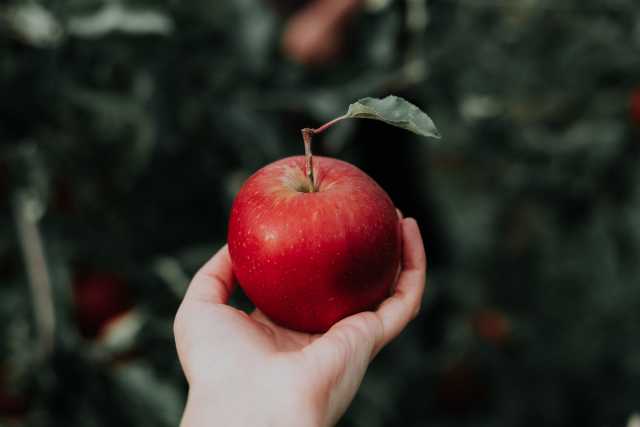Healthcare
Medicare can pay for many of your healthcare expenses after retirement, but you’ll need to enroll within seven months of reaching age 65 to avoid penalties.

Stephanie Faris
•
Published May 1st, 2020
•
Updated April 24th, 2022
Table of Contents
Key Takeaways
You’ll need to apply for Medicare benefits within seven months of reaching the age of 65.
Failure to apply on time can result in a higher premium when you do start taking benefits.
Enrollment is automatic if you’re receiving Social Security benefits already.
As the date for your retirement nears, you may begin to wonder if it’s time to sign up for Medicare. The official age for Medicare enrollment is 65, but you’ll need to actively sign up within seven months of your 65th birthday. If you’re receiving Social Security benefits, you’ll be enrolled in Medicare Parts A and B automatically.
But even if enrollment is automatic, you still need to register. To take charge of the process, it can help to equip yourself with as much information as possible leading up to your enrollment date. This guide will help.
Medicare A-D: knowing the difference
When it’s time to apply for Medicare, you’ll first need to know what your options are. There are four separate parts, labeled A through D, and most people don’t sign up for all four. Here’s how it breaks down:
- Medicare Part A: Since Medicare A covers hospitalization, it’s the plan you’re enrolled in automatically when you sign up for Medicare. It covers inpatient hospital stays, nursing home care, hospice care, and some home healthcare.
- Medicare Part B: This plan covers those visits to your doctor, whether those visits are for preventive care or treatment. It also pays for medical supplies and outpatient services. You’re required to enroll in Medicare B unless you can demonstrate that you have coverage from another source.
- Medicare Part C: This plan is sold as an alternative to Medicare Parts A and B. Also known as Medicare Advantage, it combines A and B into one plan, sometimes including Part D and other benefits.
- Medicare Part D: Covers your prescription drugs.
Although enrollment in Parts A and B are the most popular, Parts C and D are also worth considering. You may also want to get a supplement to cover some of those all-too-elusive coverage gaps. Medicare supplements are offered by private-sector insurance agencies and can be a worthwhile investment. Medicare supplements like Medigap cannot work with Medicare Advantage Plans (Part C) – they can’t be used to pay any Part C co-pays, deductibles, or premiums.
When to apply for Medicare
That brings us to your enrollment date. When you reach the age of eligibility, which is typically 65, you’ll be given a seven-month initial enrollment period. During that time, you’re expected to choose either Part A, Part B, or both.
For those already receiving Social Security benefits, enrollment will be automatic. Three months before your 65th birthday, you should get a Welcome to Medicare package in the mail. That packet will have all the information you need to get started. During that seven-month Medicare enrollment period, you can opt to keep Parts A and B, drop one, or enroll in Parts C and/or D.
The seven-month enrollment period is very important. Part B is the essential one here. You will need to either apply or follow the instructions in your welcome packet within seven months of your 65th birthday. If you don’t, you’ll be charged the Medicare Part B late-enrollment penalty. This penalty is a premium increase of up to 10 percent for every 12-month period you failed to enroll.
A penalty may also apply to your Medicare Part A enrollment. If you don’t qualify for the free version of Part A, and you later need to buy it, you can face a monthly premium hike of up to 10% for twice the number of years you neglected to sign up. For a more detailed dive into Part A and Part B sign-up periods, take a look at Medicare.gov.
How to apply for Medicare
Those already receiving Social Security benefits when they reach age 65 will have the easiest process. Once that packet arrives in the mail, just follow the instructions. Otherwise, you’ll need to kick off the application process yourself. How you do this depends on whether you’re already receiving Social Security.
If you’re not yet ready to start receiving Social Security, just go to the Medicare signup page and answer some basic questions to enroll. If, however, you’re ready to start receiving Social Security benefits, you’ll go straight to the Social Security application page. The Social Security Administration works with the Centers for Medicare Service (CMS) to enroll recipients in Medicare once Social Security benefits kick in.
What if you’re still working when you blow out the candles on your 65th birthday cake? You may not need Medicare, due to your employer-provided coverage, but you’ll still want to check on whether you need to enroll or not. Why? You’ll want to avoid that late-signup premium hike when you enroll later.
The key to whether you pay a penalty or not lies in the size of your employer. If your employer has fewer than 20 employees, you’ll need to sign up for Parts A and B at the time of your first eligibility. Otherwise, work with your benefits representative to delay Medicare coverage to stay on the safe side of that penalty.
Medicare general enrollment period
Once you’ve researched how to enroll in Medicare, you’ll probably wonder when you should do it. If you’re still within the seven months following your 65th birthday, get started now to avoid onerous penalties. If that timeframe has come and gone, though, you’ll need to pay close attention to Medicare’s annual enrollment periods.
The annual general enrollment period for Medicare is January 1 through March 31 every year. You’ll need to pay premiums, which may include a penalty, and your coverage will kick in July 1. However, there are circumstances where you can enroll outside the annual enrollment period.
Medicare special enrollment period
If you’re employed and covered under a group healthcare plan, you may qualify for something called a Special Enrollment Period (SEP). This allows you to sign up for Medicare Part B or A outside the general enrollment plan. To be eligible for a SEP, either you or your spouse must be working, and you must have group coverage due to that employment.
Another instance where you can qualify for a SEP is if your group coverage ends due to a loss of employment. In these circumstances, you’ll have eight months to sign up for either Part A or Part B, usually without penalty, starting the month after the employment situation ends.
Bottom line
When you’re researching how to get Medicare, it’s important to realize that each circumstance is unique. Rely on the expertise of your current benefits administrator, as well as the Social Security Administration, to help you find the right healthcare plan to pay for your medical expenses after you reach retirement age. For more help with your retirement goals, talk to an advisor at Retirable today.
Share this advice

Stephanie Faris has written about finance for entrepreneurs and marketing firms since 2013. She spent nearly a year as a writer for a credit card processing service and has written about finance for numerous marketing firms and entrepreneurs. Her work has appeared on Money Under 30, The Motley Fool, MoneyGeek, E-commerce Insiders, and GoBankingRates.
Medicare Basics
Medicare Benefits
Medicare 2022
Applying for Medicare
Medicare Considerations
Medicare Taxes
Healthcare Considerations
Share this advice

Stephanie Faris has written about finance for entrepreneurs and marketing firms since 2013. She spent nearly a year as a writer for a credit card processing service and has written about finance for numerous marketing firms and entrepreneurs. Her work has appeared on Money Under 30, The Motley Fool, MoneyGeek, E-commerce Insiders, and GoBankingRates.
Free Retirement Consultation
Still have questions about how to properly plan for retirement? Speak with a licensed fiduciary for free.



